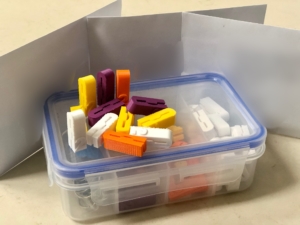


PROJECT SUMMARY
During the global Covid-19 pandemic, we have continued to provide pupils with a full academic and creative curriculum without any delay or gap, whilst transitioning from normal school life to remote learning. As a 1-to-1 iPad Apple Distinguished School, we have taken a synchronous approach to learning: teaching to a set timetable in real-time, no matter the location of staff and pupils.
All pupils have experienced live lessons via Zoom, and now via Showbie Beta Video Chat, alongside many pre-recorded lessons/ tutorials distributed, completed and marked via Showbie.
One of the largest issues that we could see with remote learning was the lack of community spirit and the effect this would have on our pupils and their mental health.
We have combated this in many ways such as virtual assemblies and continued merit scheme and reading challenges.
The response from parents, pupils and staff have been fantastic and it is clear that this way of teaching/learning will have a positive effect on the future at Bolton School Junior Boys’.
It certainly has been a massive success.

“We have combated these unprecedented challenges through a continued merit scheme and reading challenges. The reading challenge (Book Belt Challenge) encourages the boys to read what they want in conjunction with a very open-ended set of criteria that, when achieved, sees them presented with a 3D Printed Clip to put on their blazer. These clips are different colours and, just as in karate, they work up to a black belt. These clips have been printed continuously throughout Lockdown and posted home. This has really helped the boys feel that they belong to something much larger than simply learning and reading at home on their own.”
Aaron Winstanley, CREATE Education Ambassador / Design & Technology Lead.
Bolton School Park Road Junior Boys’ School.


PROJECT DETAILS
During this period of remote learning, all pupils in Years 4 to 6 have been using their Design and Technology lessons to follow a series of tasks in TinkerCAD to develop their skills and understanding of features within the App. This has taken them all the way through logging in and dragging basic shapes, to importing STLs, editing them, and exporting STLs to be printed. The pupils have followed a series of pre-recorded videos that talk and show them through every stage of the process so that in the final week they can design their own keyring to be printed before the end of term, and posted home. One, unplanned, success of this project was the resilience boys have had to show and improve during this project. Normally, when dealing with new technologies there are issues to combat that I, as their teacher, would just sort quickly for them. Pupils have had to work issues and problems out for themselves with my advice from a message in the Showbie class.


Alongside this project, pupils were seeing their class teacher using the 3D Printing technologies to print headbands and face visors for the NHS and also using TinkerCAD (and the very same features they have been learning about in their own lessons) to adapt the Italian ‘Charlotte Valve’ to produce a valve that better fits British medical equipment. These products have been distributed across Intensive Care Units across Greater Manchester. Pupils seeing similar work to theirs having such a large impact across the country has certainly added to their enthusiasm towards 3D Printing.

At half-term, their TinkerCAD lessons finished and they moved onto a Technical Drawing unit where they were drawing their 3D Printed Product as an isometric project, 1-point perspective and 2-point perspective drawing. These lessons have followed a similar pattern with pre-recorded, instructional videos posted in Showbie. These lessons were completed using the Tayasui SketchesSchool App.

RESULTS
The project introduced students to the impact of the 3D Printing industry and rewarded them with their own 3D Printed artefact.
With the rapid development of technologies and subsequent uncertainty, the project equipped them with new skills required for a 21st Century workplace: problem-solving, critical thinking, design thinking and iterative development. Along with teaching resilience.
CONCLUSION
This newfound way of teaching and learning will have had a positive effect on our pupils, as well as shaping future projects completed in the classroom. It has been exciting and interesting to see the adaptations people have made and the journey our community has taken.

You must be logged in to post a comment.
Wonderful content as always. I love how you talk about the projects and topics in detail. Keep the articles coming.